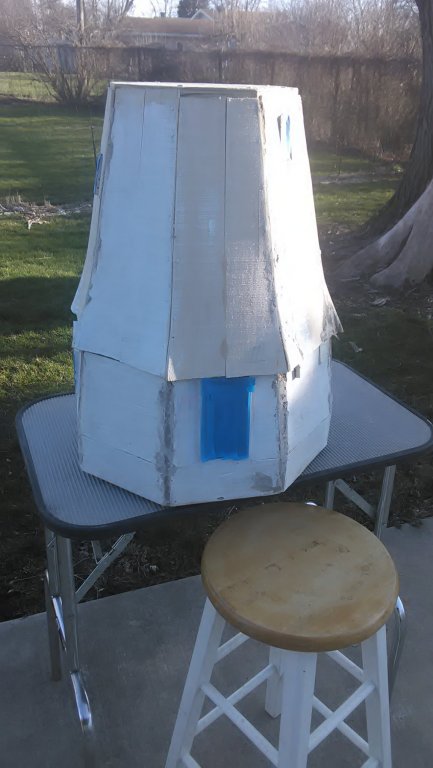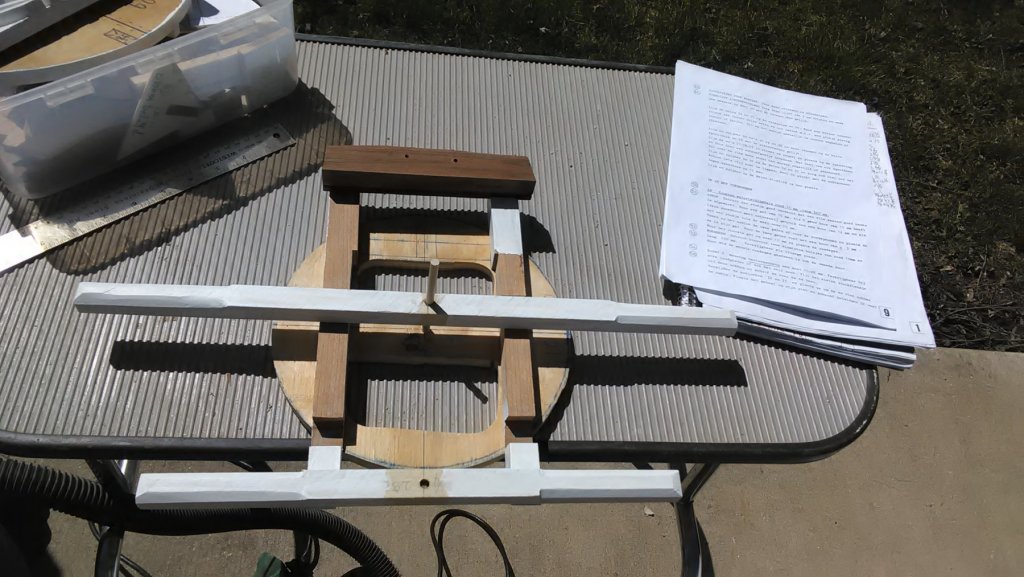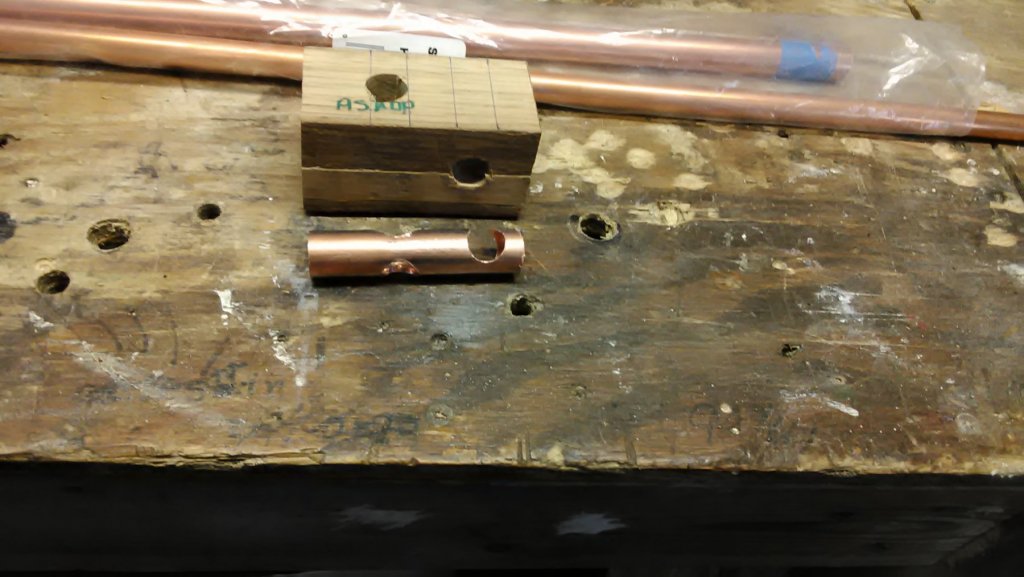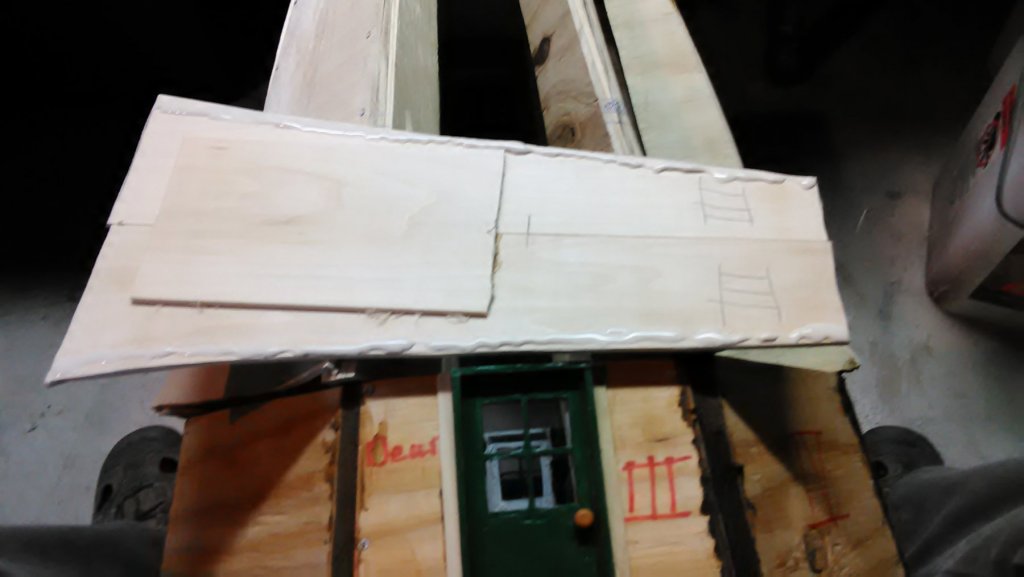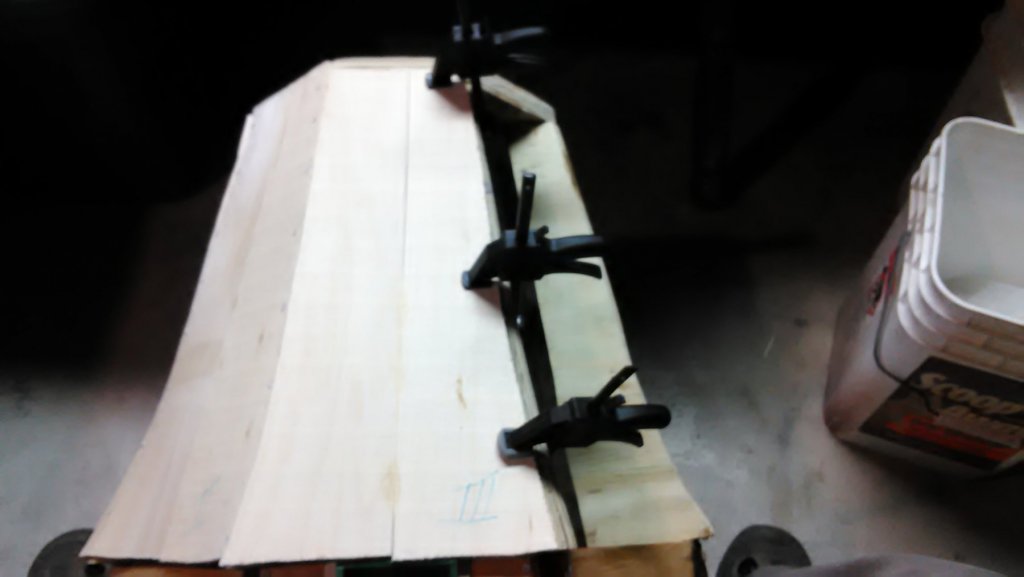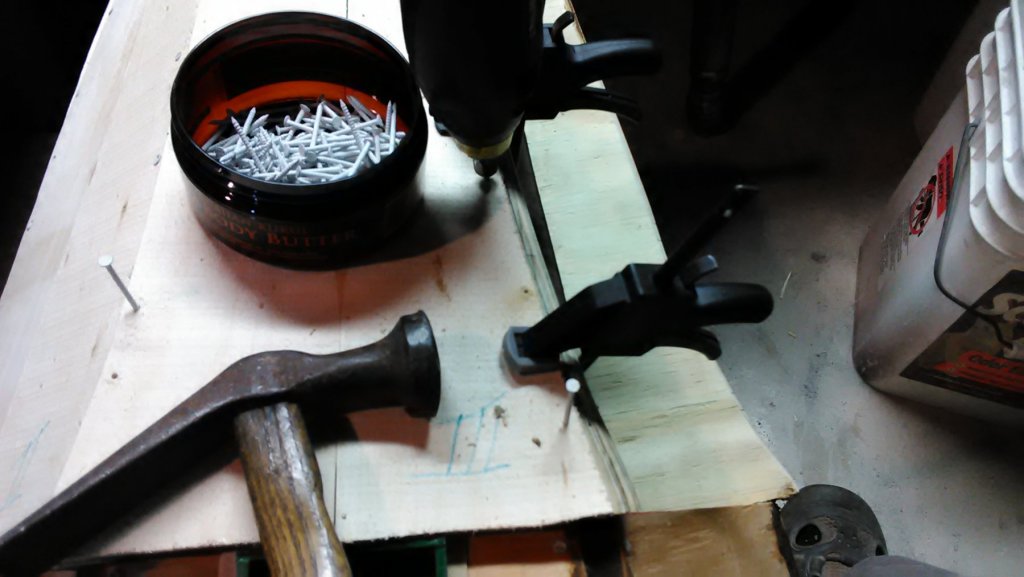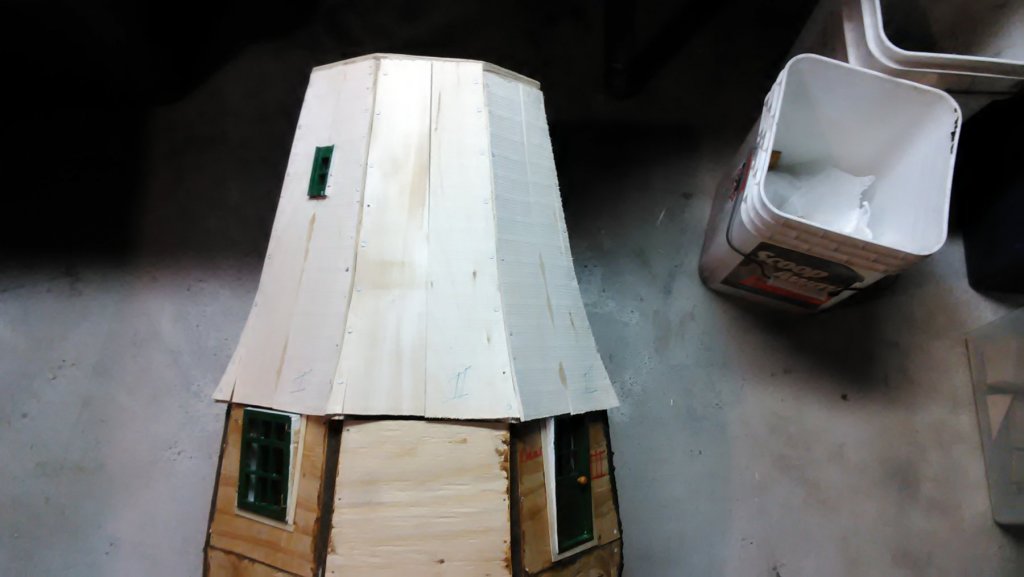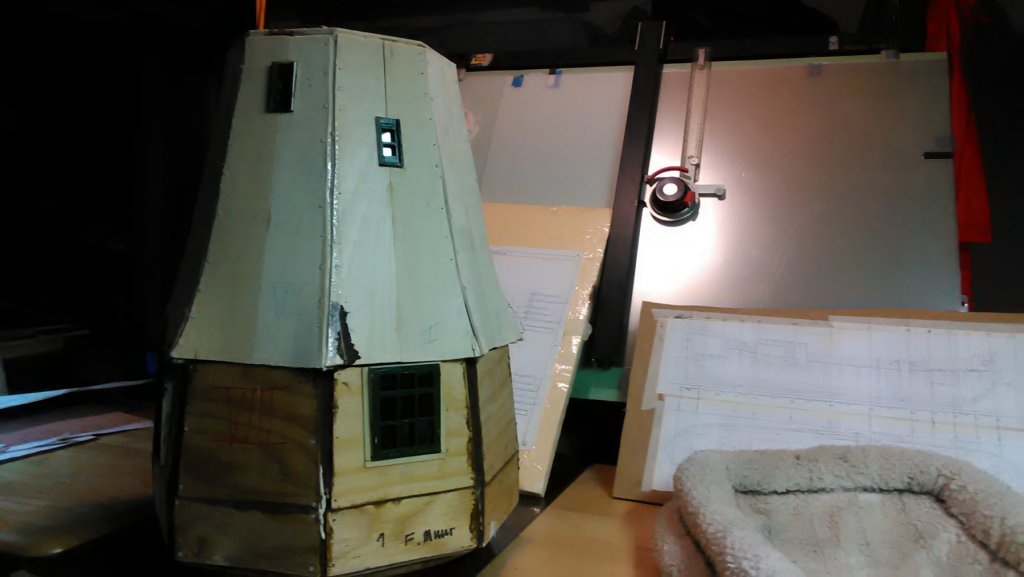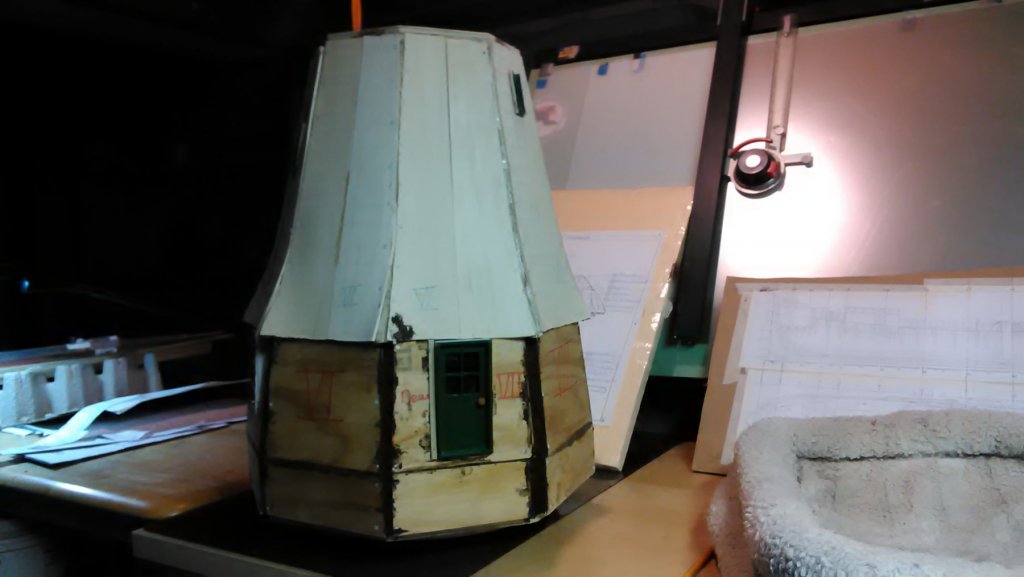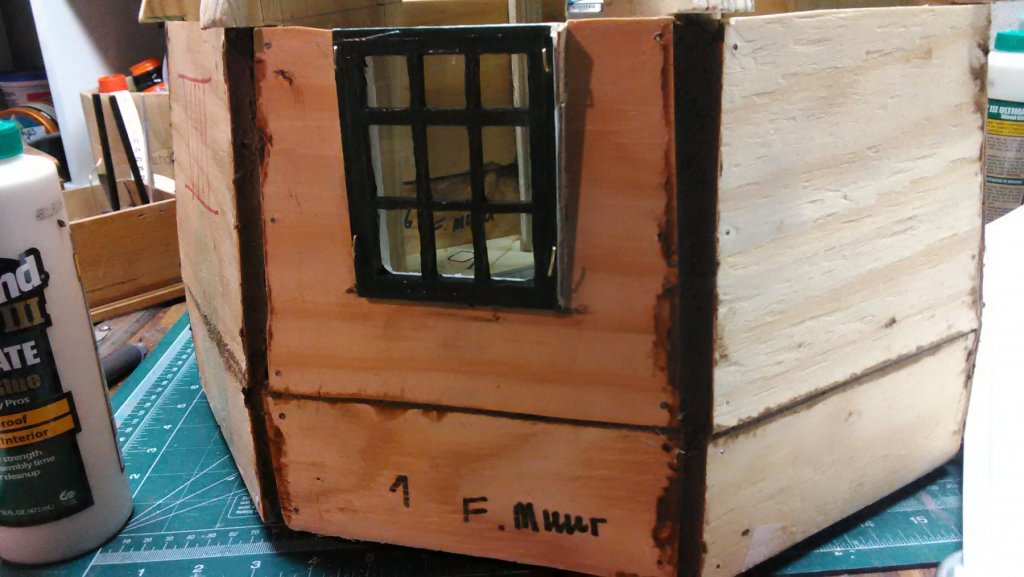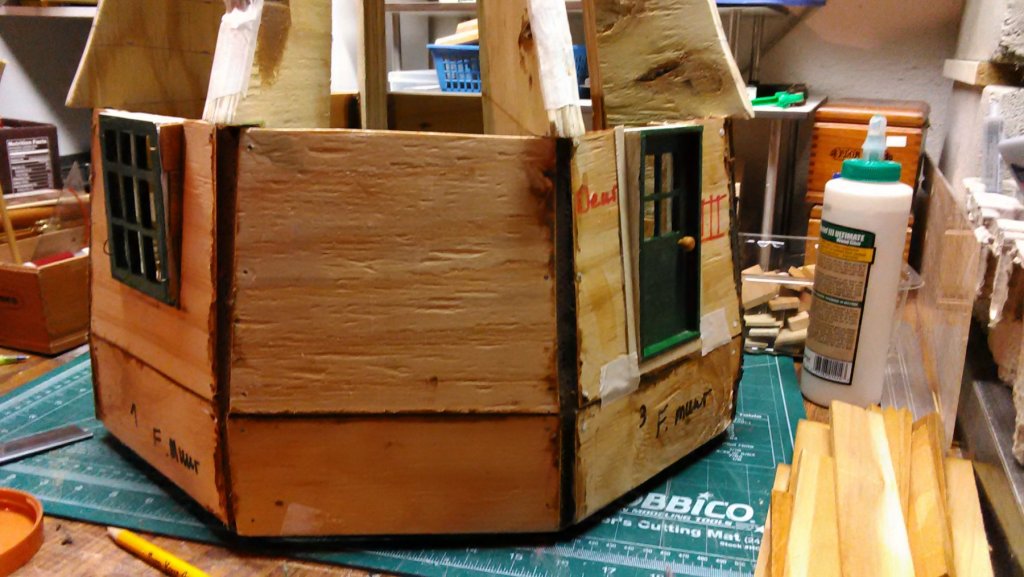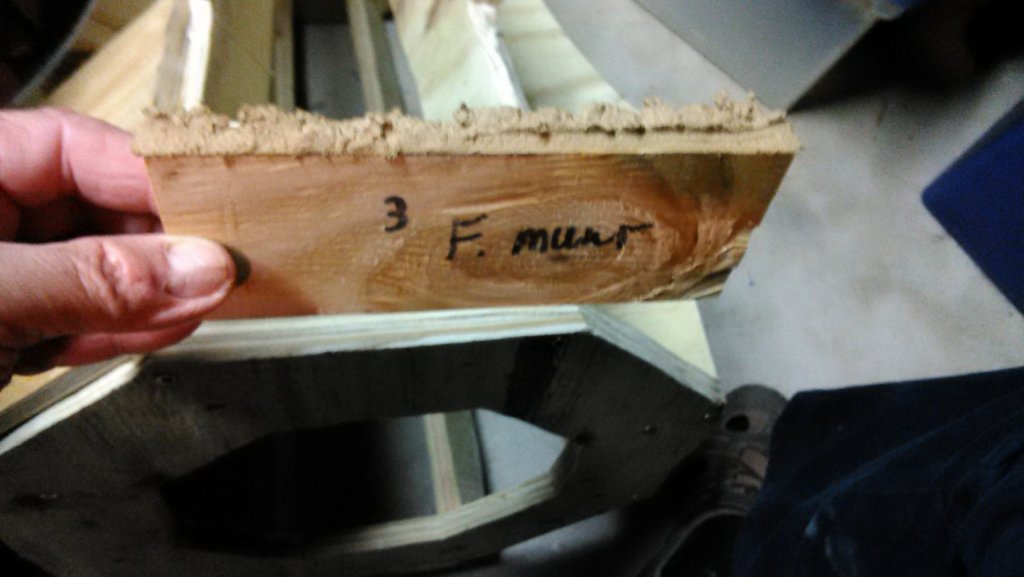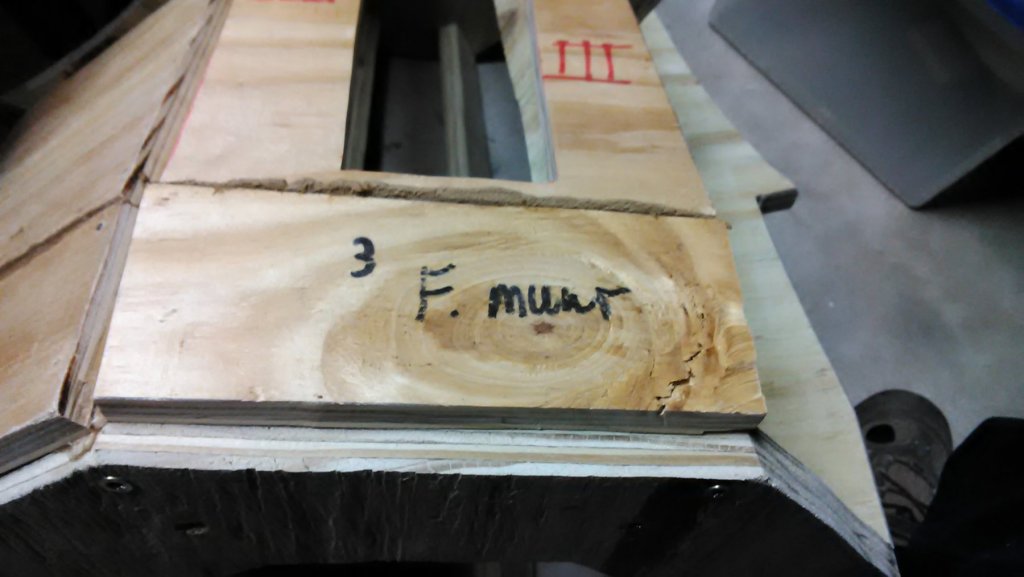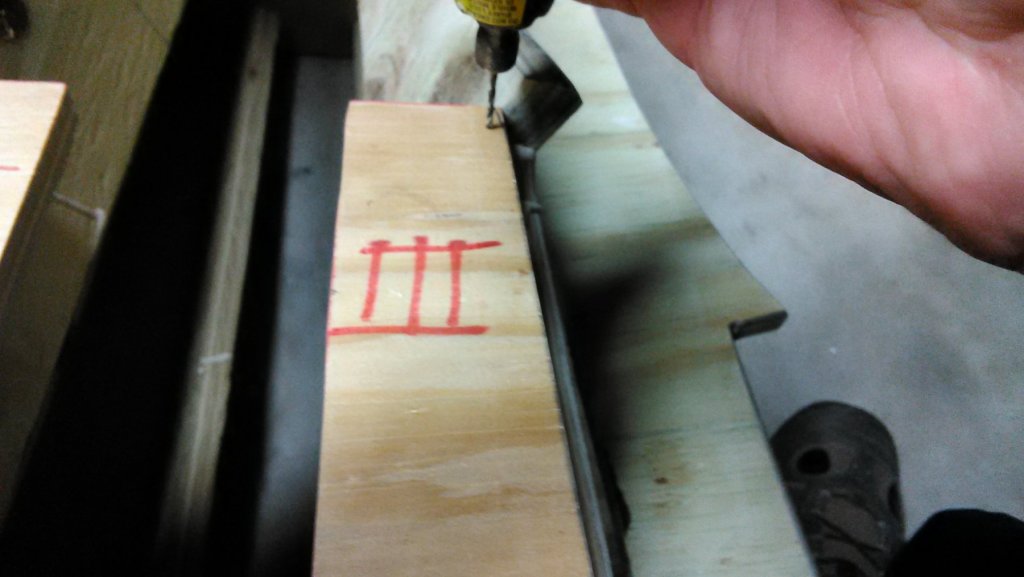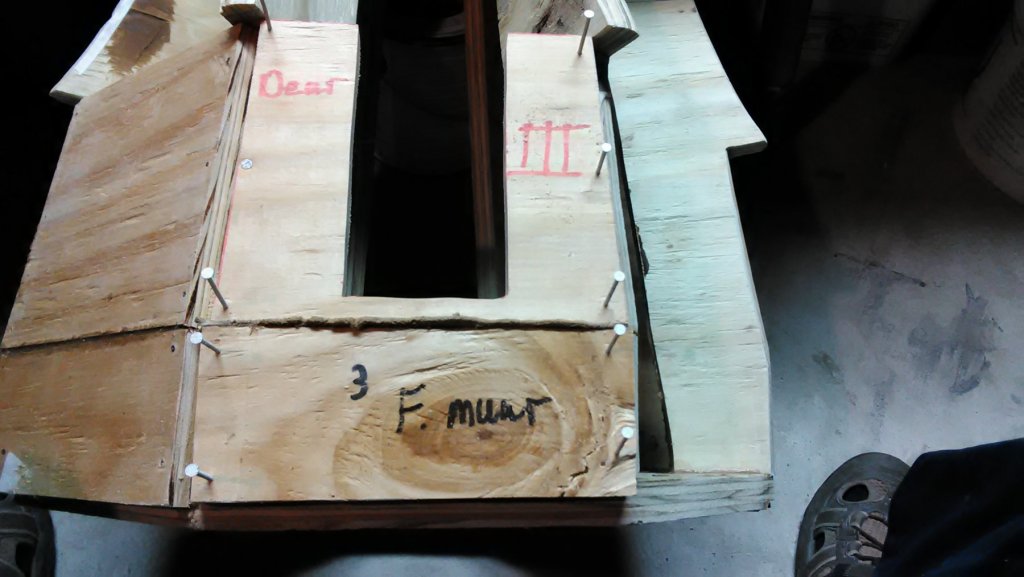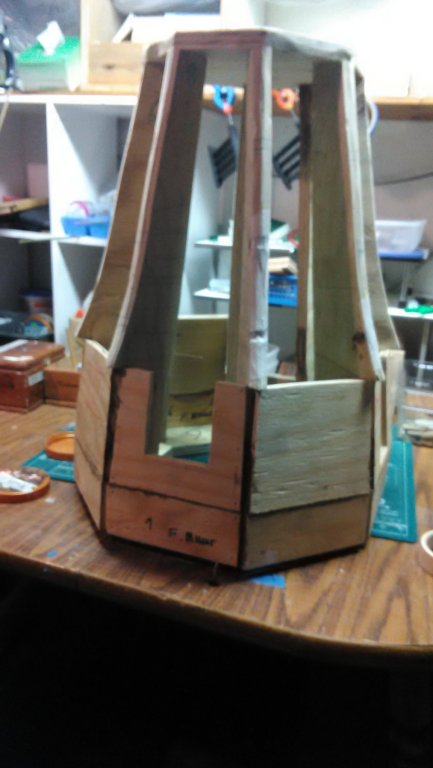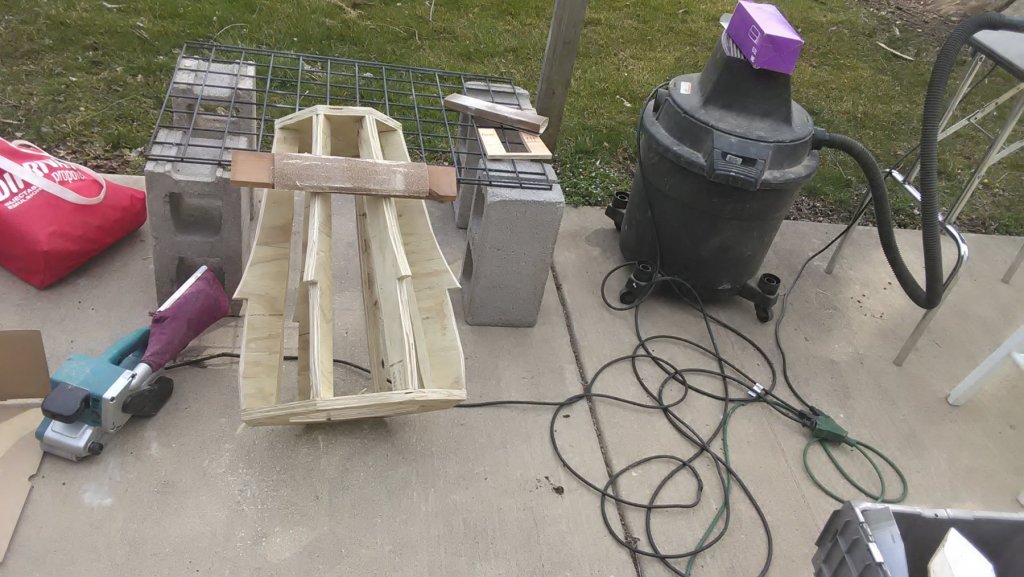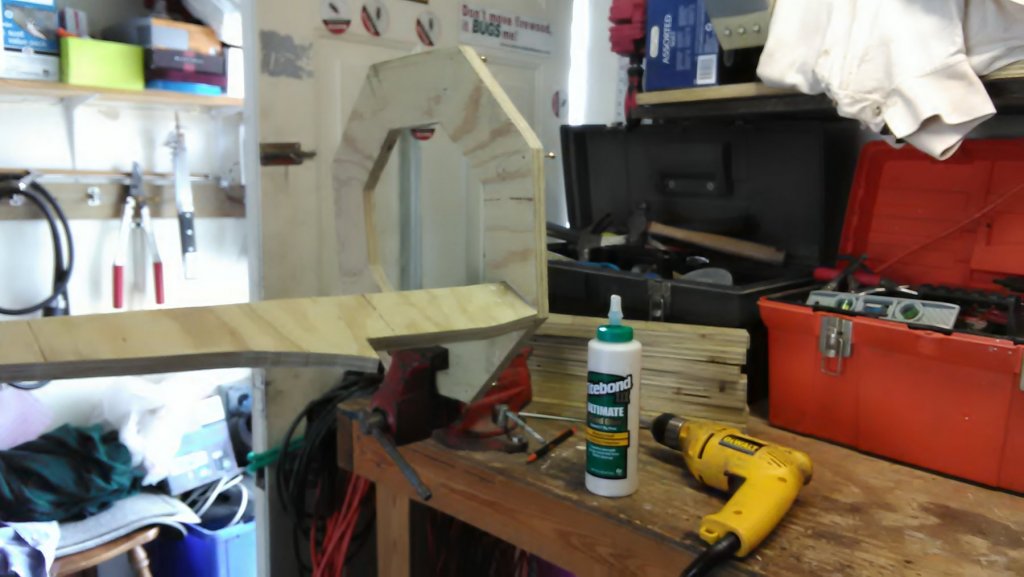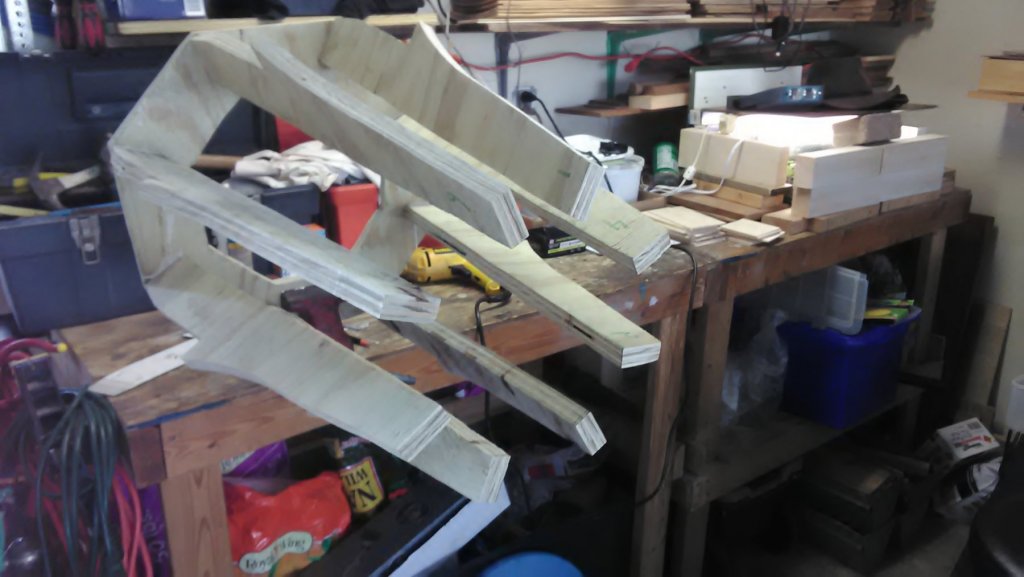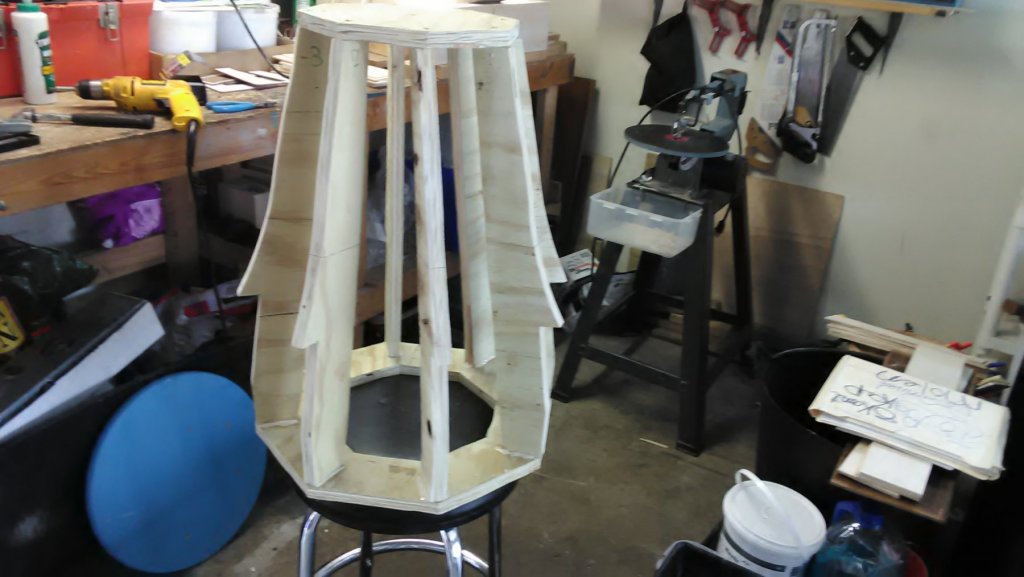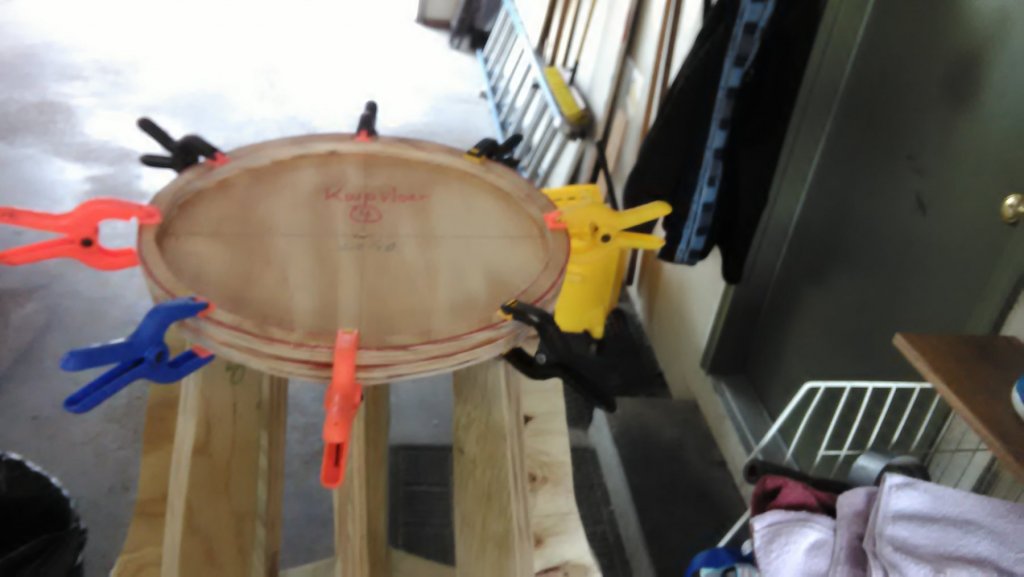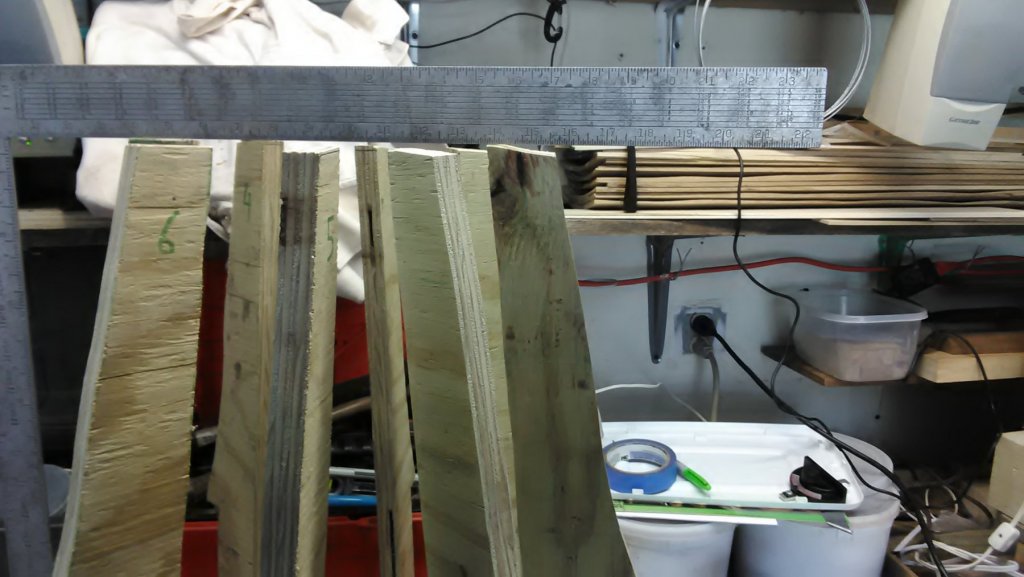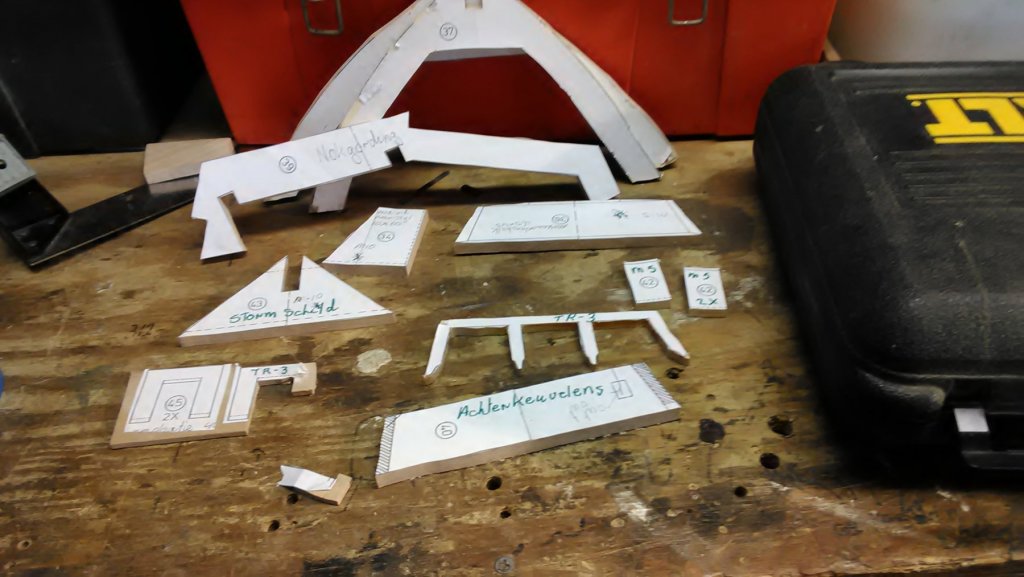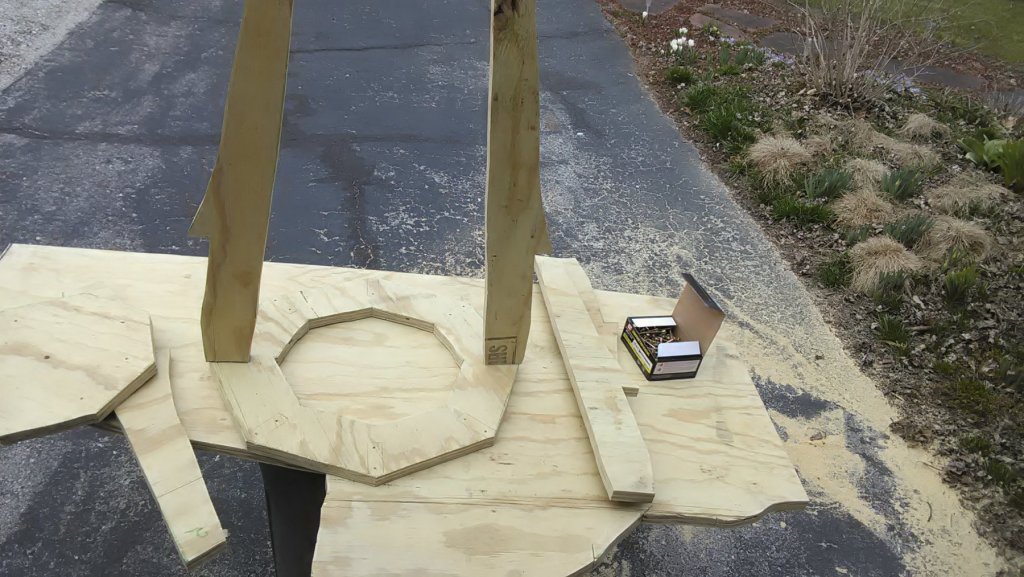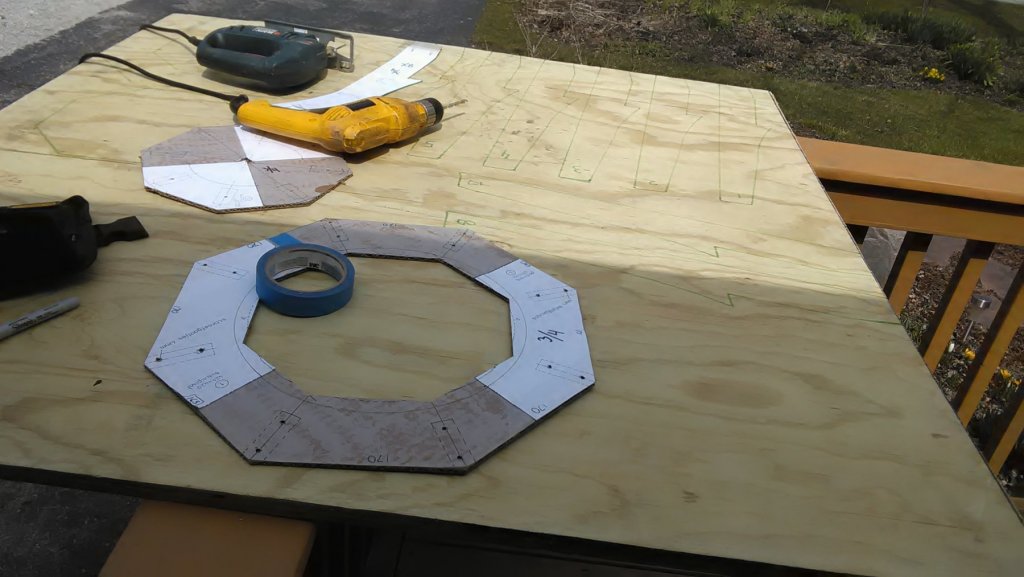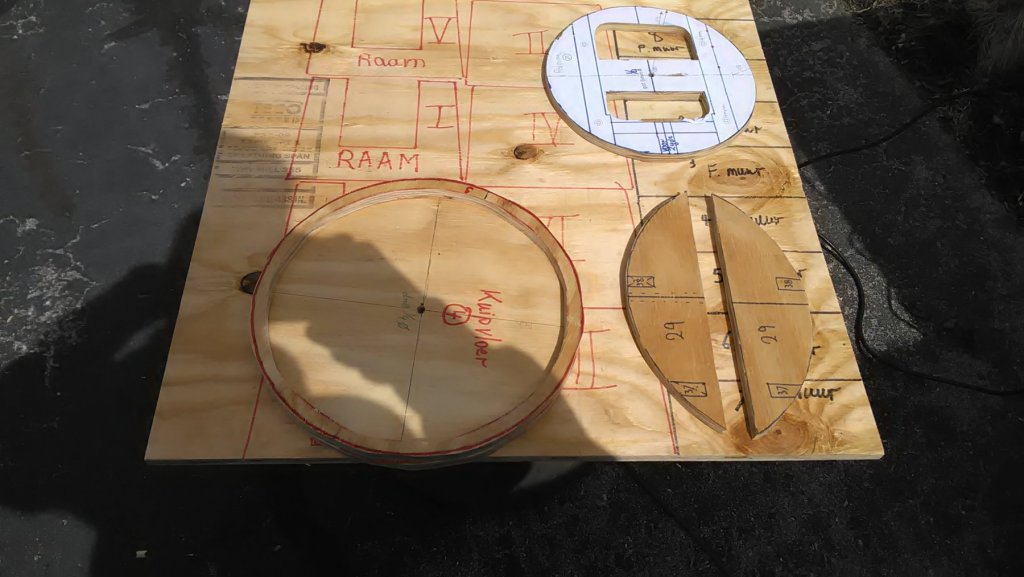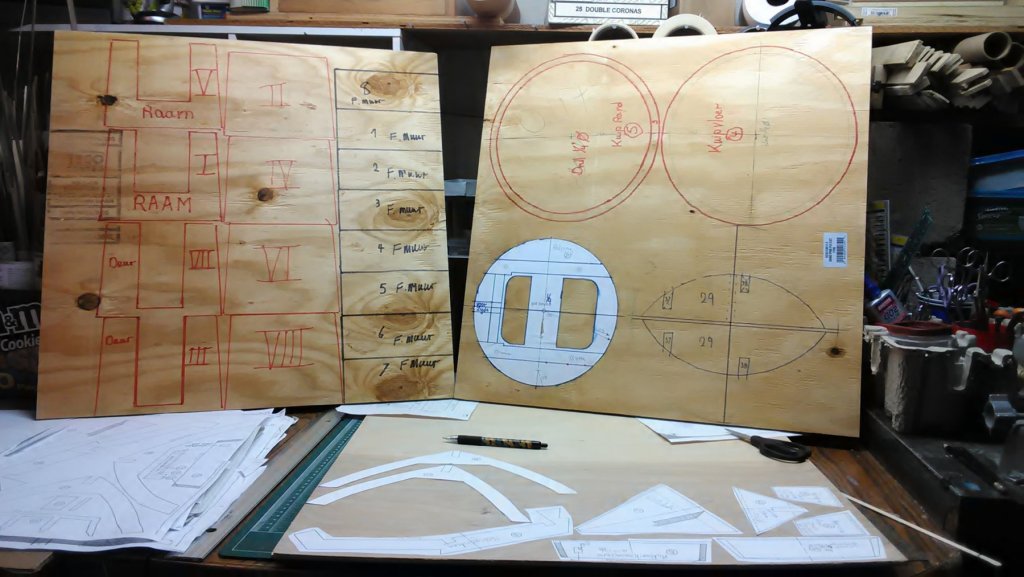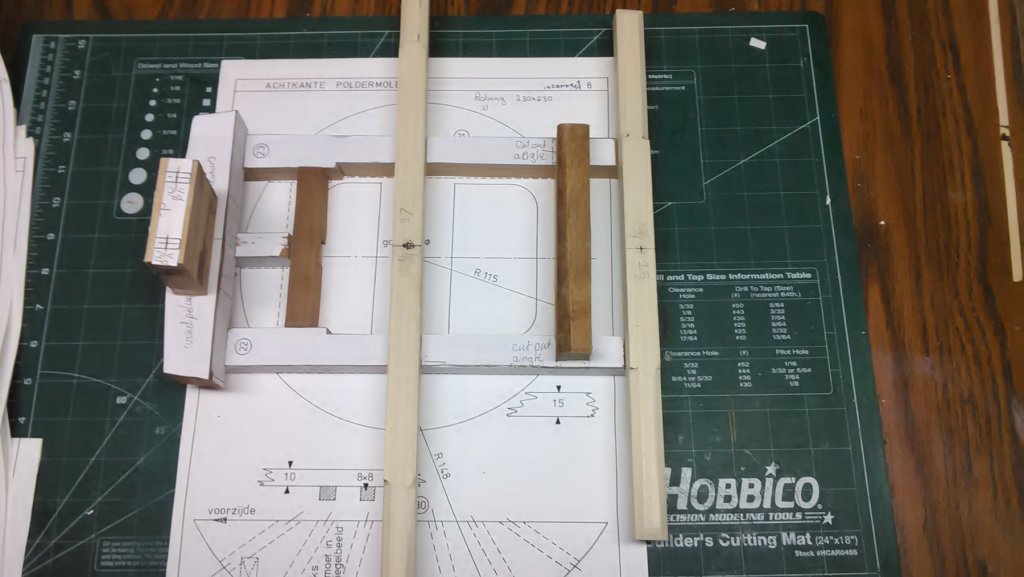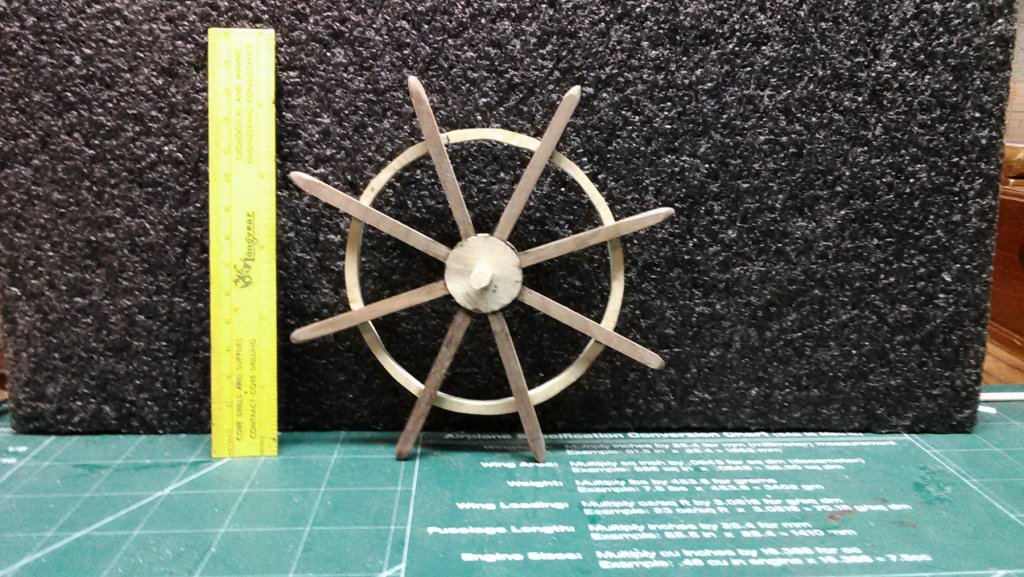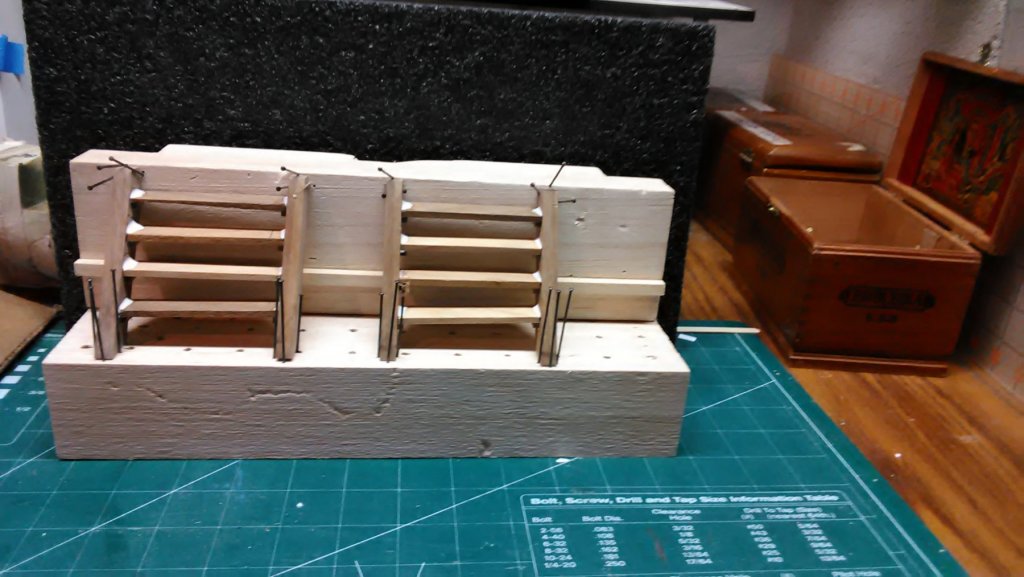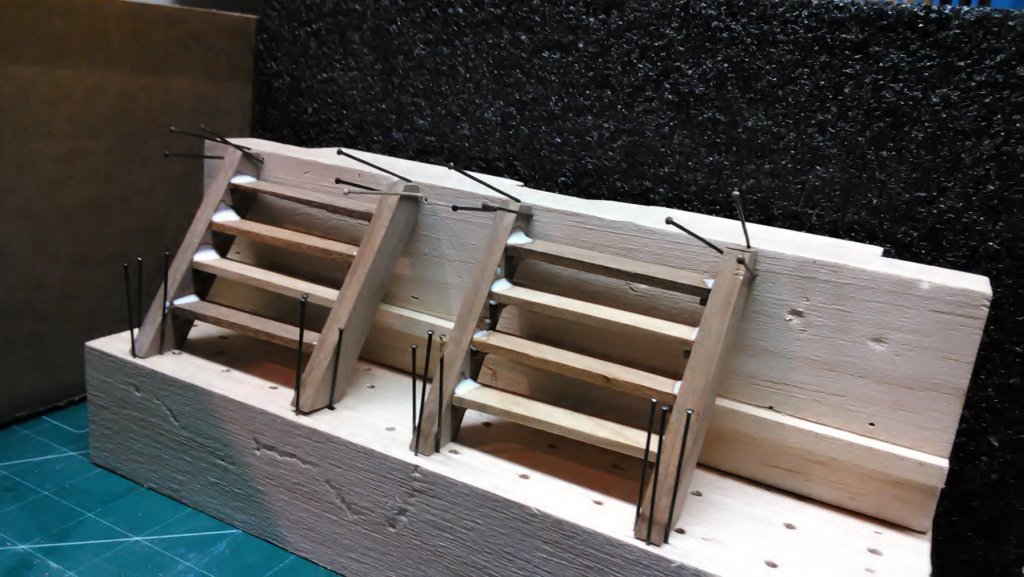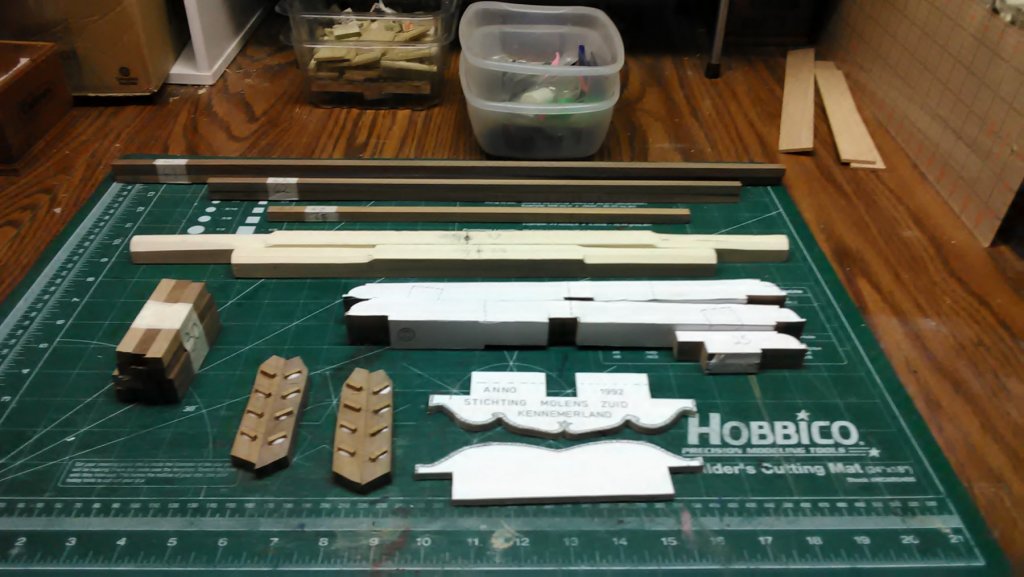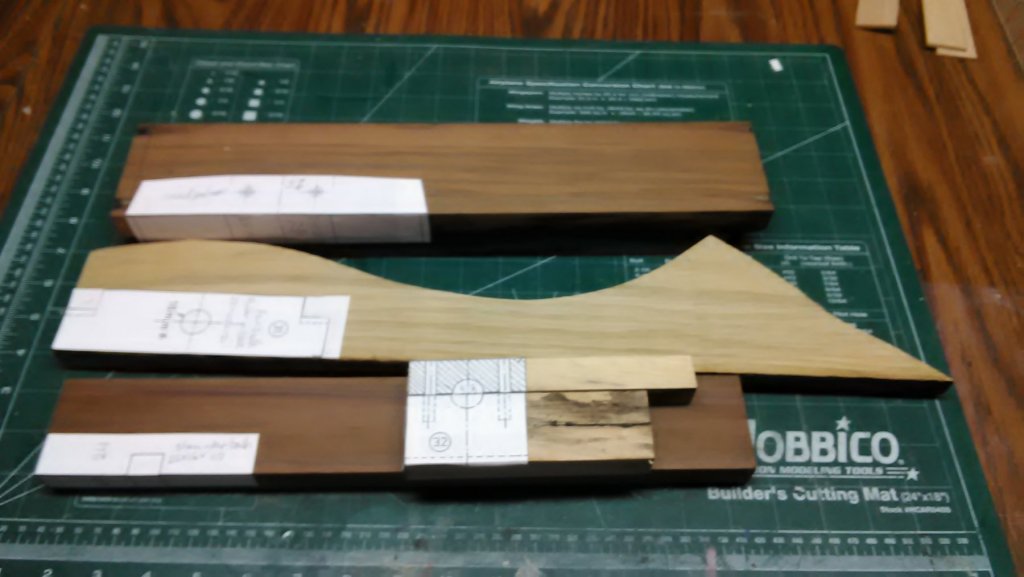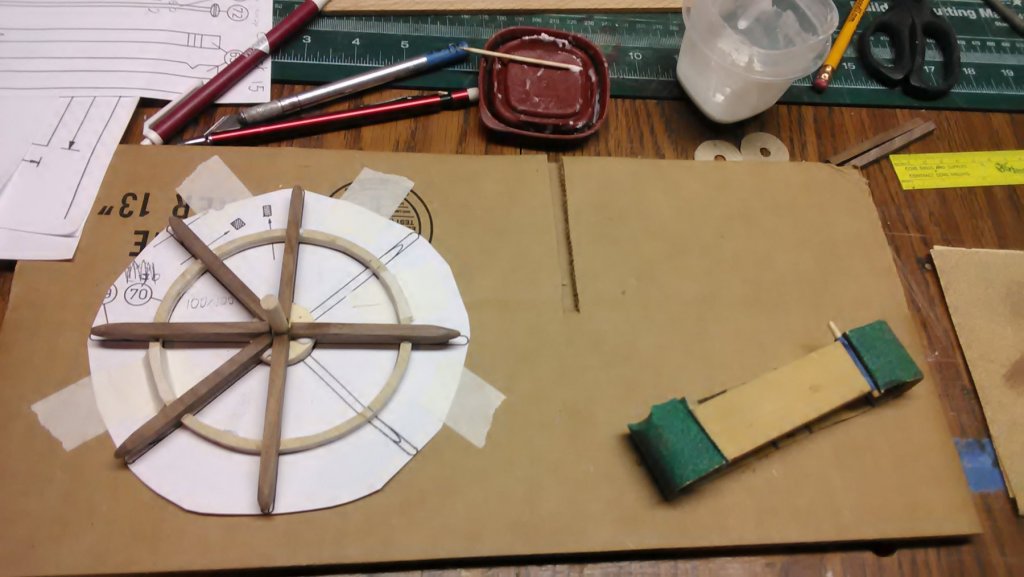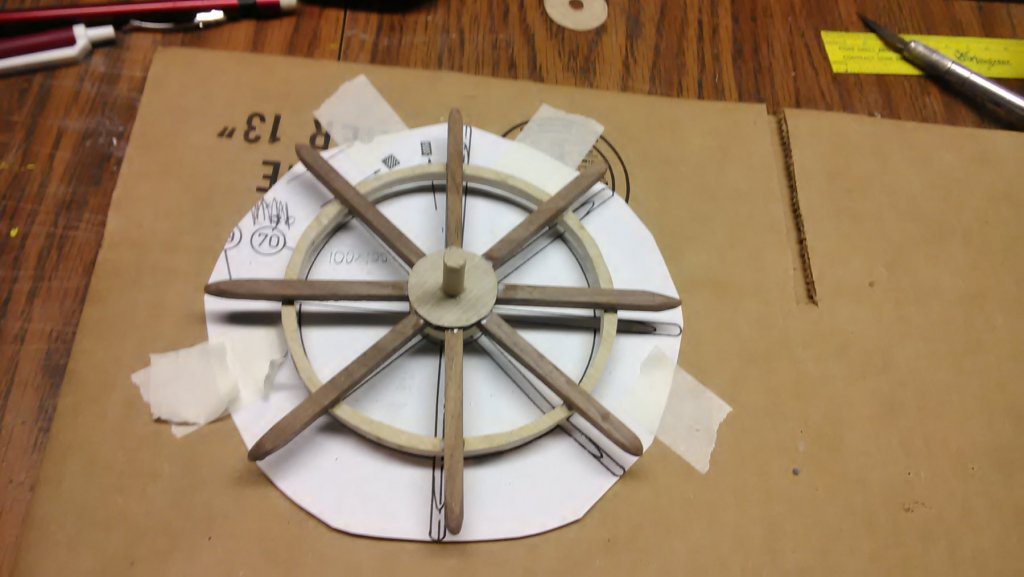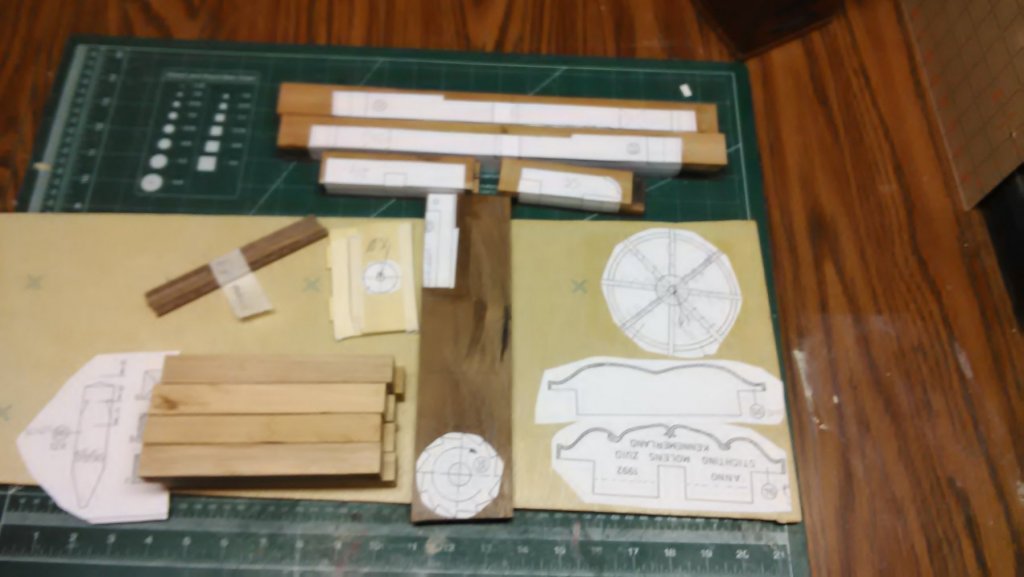-
Posts
1,735 -
Joined
-
Last visited
Content Type
Profiles
Forums
Gallery
Events
Everything posted by flying_dutchman2
-
Found out yesterday that the neighbor no longer has the drill press. Did ask him who did and he said the man next door to him. So I may ask him. This coming Thursday is my woodworkers meeting and may just ask the person I am good friends with. He builds furniture in his spare time. He must have a drill press. Doing this part of the mill is in the future. Tomorrow I need to do some more painting and put the tile glue on to imitate the thatch. Marcus
-
Today was a sunny day to do some sanding outside and start building the cap. Sanded the mill and put together the framework of the cap. Also drilled the axle head, which is the piece where the vaines will be attached to. It ended up as a complete failure. I did it by hand but need a drill press. Tomorrow getting a six pack of beer and next week go to the neighbor across the street, with the 6 pack and ask if I can use his drill press. Marcus
-
Drafting table is from the mid 70's and is one very sturdy piece of furniture, I needed that when I was at the Rijks Middelbare Tuinbouw School in Utrecht (Royal Middle Horticulture School). I use the table for drawing (duuuh) and the clamp that tightens the table is so strong I can set heavy objects on it when it is in the horizontaal position. The pieces are glued with a wide strip of wood in the back and they bend better. I have so much extra wood, I decided to use some of that to keep the cost down. So far I have spent around $200.00. The marine plywood is expensive. The bottom plate has an opening the size of the top plate. When it is all done I will set it on top of several stone tiles. Marcus
-
The instructions say it gets painted, no brick. Glued the 4 small windows in the thatch areas (rietvelden). Laid the skeleton on the floor at an angle and glued and nailed the 8 thatch roofs on the skeleton. Put Titebond glue on both sides that come in contact with the frames. Put it on the frame and make sure that it is straight. Use clamps on one side and pre-drill pilot holes every 5cm in the thatch layer. Use small, long ribbed nails to attach it to the frame This is important. Start driving the nails from top to bottom. Left, right, left, right and so on. I made the mistake by doing one side first and then the other and the wood split in 2 places. Remedied that by pushing a square dowel under the crack and pasting it together. The dowel is nailed to the wall. Cracks I will cover with the tile glue. Let it dry overnight and then I will sand whatever needs it, fill cracks and see what needs to be fixed or added. Then prime the foundation walls and upper walls with 2 layers and also do the bottom plate (bodem plaat). Practice layering the tile glue on a piece of wood and imitate the thatch layer. Per instructions, the open areas between the bottom of the thatch layer and the top of the walls needs to be as is for aeration. I may glue or nail mosquito netting. I don't want any squatters occupying the mill. Working in this scale (1:15) sure is different compared to (1:48). Easier to cover up mistakes and no need to redo it. Marcus
-
Glued and nailed the foundation wall and the pieces that go above that wall to the frame. I create a paste of sawdust and Titebond III wood glue and fill in the gaps between the two walls and where the sides come together. Once dry it is very hard, waterproof, and resists cracking and shrinking. I have made this paste for many outdoor projects. Once dry, I will dry fit the doors and windows. Remove them and paint a primer on the walls. Once done I will glue and nail the under layer for the fake thatch roof. I read on another site that a person uses an epoxy resin to water proof the outside. I have this from another model I made years ago and may use it. Marcus
-
There is a Dutch windmillwright by the name Anton Sipman and wrote 2 Dutch books on windmills. Molenbouw: Het Staande Werk Van De Bovenkruiers 2002 (no English translation) and Molen Wielen (Mill wheels) which is out of print. I am surprised that there aren't more books about windmills, the technical side of it. The workings of them, especially with the amount and types the Netherlands has. Or I am not looking in the correct place. I am going to put some type of lattice within the mill under the thatch area similar to the picture 'cog' uploaded, but less. Marcus
-
Sanded the skeleton. First drew a line down the middle lengthwise on the outside of the strut, then sanding straight. Took a sheet of 50 grain sandpaper, wrapped it around a piece of wood and then sand up and down. Used the belt sander for the top area which is narrow. Noticed that the space in between the struts are not all equal as some struts are slightly warped. I can use filler or redo some of the pieces and make them wider. Marcus
-
Glued and screwed (2" long) to the bottom and top plate. Also glued the cap floor and the side together. I got the straightest 3/4" x 4' x 4' marine plywood but once sawn and sanded, three pieces still warped a bit and two pieces cracked when I put the screw in and all holes were pre-drilled. So I filled everything with the Tightbond glue. I was surprised that when it was all put together and put it on the garage floor it was level. Next I need to draw a line down the middle lengthwise for all the struts and file them in an angle so sides will fit. Marcus
-
Cut out all the parts that are needed to get a good start building the mill. Tomorrow I need to do some sanding before I glue and screw the large pieces together. The picture with all the smaller pieces are for the cap. I did do a dry run as the picture shows. The two long pieces are screwed into the bottom plate. Marcus
-
Today couldn't do anything outside because it snowed, yup, 2 inches. All my crocus flowers were covered. Then it got to be 45F and it all melted in less than a hour. So I took the 1/2" and 1/4" maritime plywood in the basement shop and glued the templates on them. The 3/4" marine plywood is 4' x 4' which is too big to carry around and will be used the next few days when it gets warmer. Other templates were glued on 3mm, 4mm, and 5mm walnut and oak. The 1/2" - 2' by 4' regular plywood is to be used to make a large template for the vanes (wieken). I bought extra as that project needs to be accurate. Marcus
-
Kees, The rudder looks great, love the details as well. Marcus
- 193 replies
-
- wilhelmina vii
- fishing
-
(and 1 more)
Tagged with:
-
I remember that one. I still have the catalog it is advertised in. Always wanted to get that. Alder is a good species of wood to make it with. Laid out the main pieces of wood on the drawing for the cap (walnut, redwood, poplar, maple & cherry) . For 'cog', that would be number 22 through 28. So many parts go in to the cap. Marcus
-
This mill is going to be made of lots of different wood. This coming weekend I am purchasing the marine plywood. regular plywood, square and round dowels, copper & aluminum tubing, other metal items, outdoor glue, tile glue for the thatch. I have glued some of the templates on the various pieces of wood. For the kruipalen (English ?) which are thick wooden pieces I am using maple pen blank pieces. Person at the woodworkers club does pen turning and he gave me box full of them. They are 1" x 1" x 6". Just right. Marcus
-
I am waiting for a dry day so I can start sanding her. It has been drizzling on and off. So instead of the boat I've been working on the mill Marcus
About us
Modelshipworld - Advancing Ship Modeling through Research
SSL Secured
Your security is important for us so this Website is SSL-Secured
NRG Mailing Address
Nautical Research Guild
237 South Lincoln Street
Westmont IL, 60559-1917
Model Ship World ® and the MSW logo are Registered Trademarks, and belong to the Nautical Research Guild (United States Patent and Trademark Office: No. 6,929,264 & No. 6,929,274, registered Dec. 20, 2022)
Helpful Links
About the NRG
If you enjoy building ship models that are historically accurate as well as beautiful, then The Nautical Research Guild (NRG) is just right for you.
The Guild is a non-profit educational organization whose mission is to “Advance Ship Modeling Through Research”. We provide support to our members in their efforts to raise the quality of their model ships.
The Nautical Research Guild has published our world-renowned quarterly magazine, The Nautical Research Journal, since 1955. The pages of the Journal are full of articles by accomplished ship modelers who show you how they create those exquisite details on their models, and by maritime historians who show you the correct details to build. The Journal is available in both print and digital editions. Go to the NRG web site (www.thenrg.org) to download a complimentary digital copy of the Journal. The NRG also publishes plan sets, books and compilations of back issues of the Journal and the former Ships in Scale and Model Ship Builder magazines.




